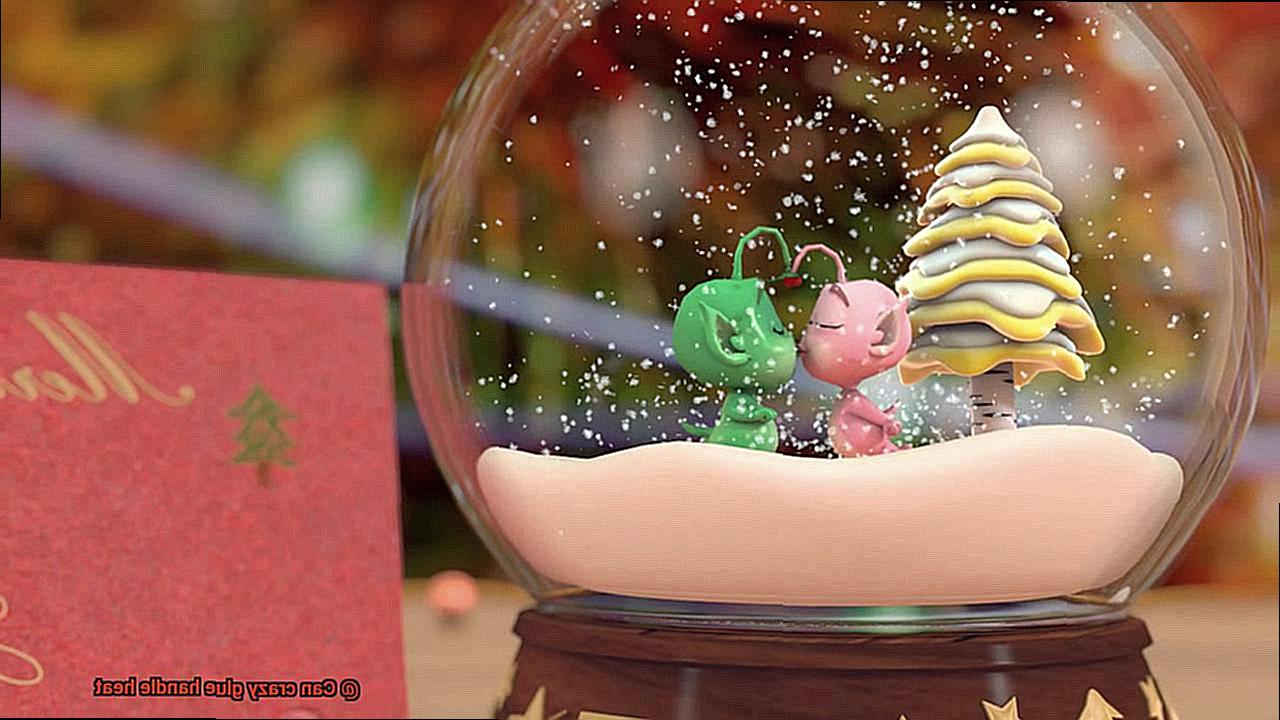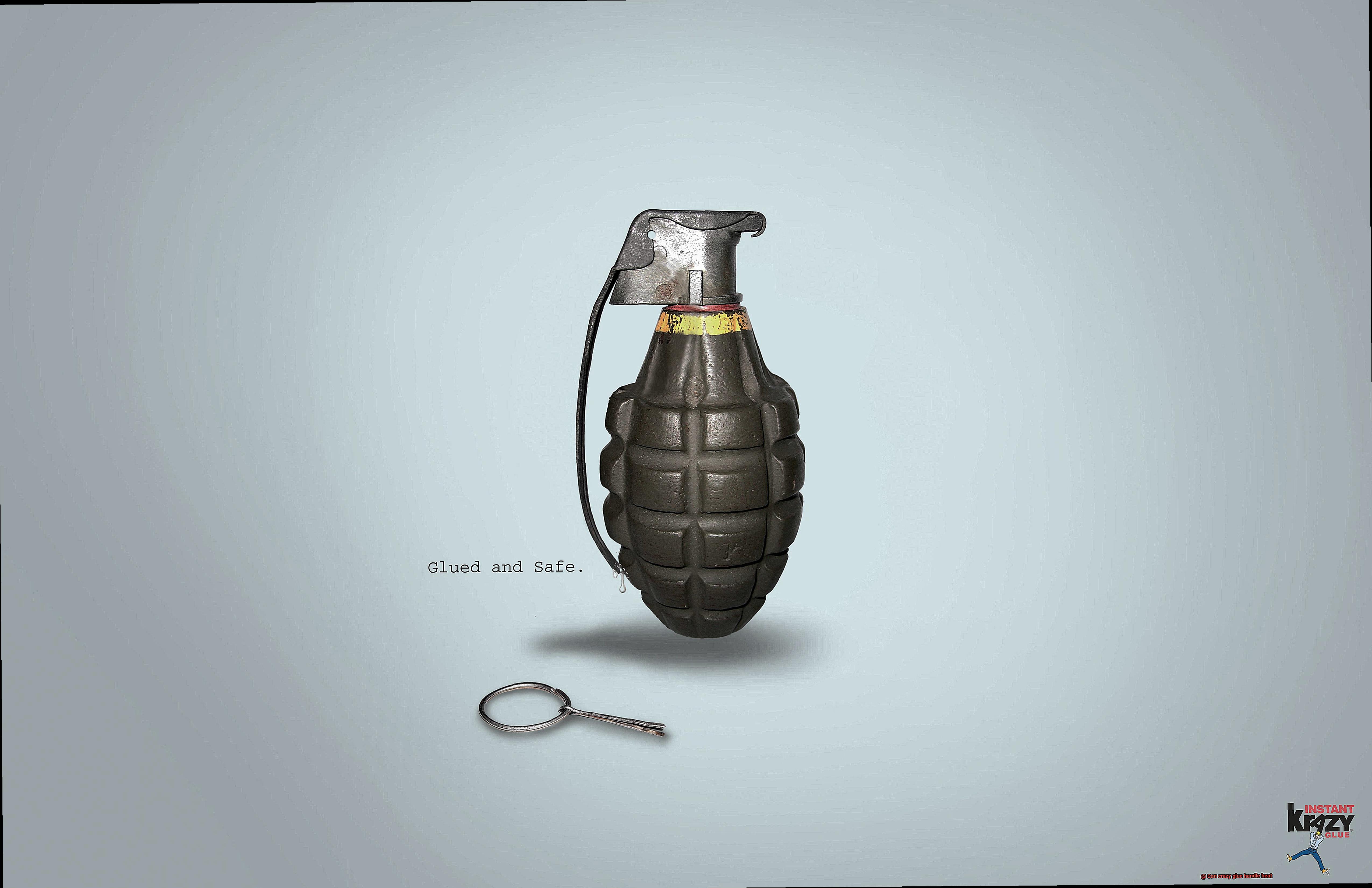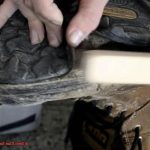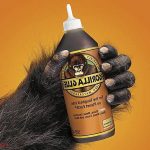Hidden within our drawers, this unassuming adhesive hero has saved countless items from their broken fate. But here’s the burning question: can it truly handle the heat? Today, we plunge headfirst into this scorching dilemma to uncover the captivating secrets that will leave you itching to test this versatile glue yourself.
Our curious minds naturally gravitate towards the science behind Crazy Glue. Crafted from cyanoacrylate, a lightning-fast bonding agent, this glue is renowned for its adhesive prowess. However, when faced with intense heat, does it have any chinks in its armor?
The exact heat resistance of Crazy Glue varies depending on the brand and formulation. Most cyanoacrylate adhesives, however, can withstand temperatures ranging from -40°C to 82°C (-40°F to 180°F). This wide range offers some solace that our trusty adhesive ally can handle everyday household temperatures without breaking a sweat.
But hold onto your hats; Crazy Glue possesses some mind-blowing tricks up its sleeve. Ever heard of the “body shop” method? Picture this: a car panel plagued by an unsightly dent or crack. Professionals have discovered that using cyanoacrylate adhesives—yes, including Crazy Glue—can keep repairs intact even under the blistering temperatures of automotive paint-booth ovens. That’s right, folks – this adhesive powerhouse stands strong against scorching heats as high as 121°C (250°F).
Nevertheless, like any adhesive warrior worth its salt, Crazy Glue does have its limitations. It infiltrates surfaces through a potent chemical bond that excessive heat can weaken. Continuous exposure to extreme temperatures near stovetops or industrial machinery can cause the glue to soften, lose its adhesive strength, or even surrender entirely.
So, before subjecting Crazy Glue to a fiery trial, it’s crucial to consider the specific heat tolerance required for your project. For everyday repairs and household items, this adhesive is a convenient and reliable solution. But when facing inferno-like conditions in industrial or high-temperature settings, exploring specialized adhesives might be the wiser choice.
In conclusion, Crazy Glue can hold its own against a fair share of heat challenges. From everyday fixes to automotive marvels, it proves
How Does Crazy Glue Work?
Contents
- 1 How Does Crazy Glue Work?
- 2 What is the Heat Resistance of Crazy Glue?
- 3 Can Crazy Glue Withstand High Temperatures?
- 4 Factors Affecting the Heat Resistance of Crazy Glue
- 5 Advantages and Disadvantages of Using Crazy Glue for High-Temperature Applications
- 6 Alternatives to Using Crazy Glue for High-Temperature Applications
- 7 Tips on How to Use Crazy Glue in High-Temperature Environments
- 8 Conclusion
Crazy Glue, also known as cyanoacrylate adhesive, is a remarkable adhesive that can create a strong bond in mere seconds. In this article, we will delve into the fascinating world of Crazy Glue, exploring its chemical makeup, the process through which it forms strong bonds, and its limitations when it comes to high temperatures.
Chemical Composition and the Marvel of Adhesion:
At the heart of Crazy Glue lies cyanoacrylate, a fast-acting adhesive that belongs to the acrylic resin family. This adhesive works its magic through a rapid polymerization process. When exposed to moisture, whether it be humidity or moisture on the surfaces being bonded, a chemical reaction takes place. This reaction causes the glue’s monomers to link together at lightning speed, forming long chains of polymers that create an unyielding bond between the two surfaces.
Unleashing Versatility: Applications Galore.
The versatility of Crazy Glue is truly awe-inspiring. It can effectively bond a wide range of materials including metal, plastic, rubber, ceramics, and wood. From household repairs to intricate crafting projects and even industrial applications, Crazy Glue is an adhesive powerhouse that can handle it all.
Confronting the Heat Barrier:
Despite its formidable bonding capabilities, Crazy Glue does have limitations when it comes to high temperatures. Heat can be its kryptonite as it weakens or breaks down the adhesive properties by disrupting the bonds between the polymers. While the temperature at which Crazy Glue’s effectiveness diminishes can vary, it generally starts to lose its grip around 180-200 degrees Fahrenheit (82-93 degrees Celsius).
Rise of the Heat-Resistant Alternatives:
Fear not. For applications involving high temperatures, there are specialized adhesives that rise to the challenge. Epoxy or silicone-based glues, expertly formulated to withstand extreme heat, maintain their bonding strength even under scorching conditions. These alternatives ensure a rock-solid bond that can endure the fiercest of temperatures.
What is the Heat Resistance of Crazy Glue?
Step into the fascinating world of Crazy Glue, where super-strong bonds and lightning-fast adhesion reign supreme. But what about its heat resistance? Can this incredible adhesive withstand the scorching temperatures of your hottest kitchen experiments or DIY projects? Let’s dive in and uncover the truth.
Crazy Glue, scientifically known as cyanoacrylate adhesive, is made from a compound called cyanoacrylate. This compound is a true magician when it comes to bonding materials together, creating strong and durable connections in the blink of an eye.
However, it’s important to note that Crazy Glue does have its limits when it comes to heat resistance. While it excels in many areas, high temperatures are not its forte. In general, Crazy Glue starts to lose its adhesive powers when exposed to temperatures above 180°F (82°C). So, if you’re planning on sticking something near a blazing hot oven or stovetop, think twice before relying solely on Crazy Glue.
The heat resistance of Crazy Glue can also be influenced by factors such as the thickness of the adhesive layer and the type of material it’s bonding. Thicker layers tend to have lower heat resistance, while certain materials may be more prone to thermal degradation when in contact with Crazy Glue.
But fear not. If you’re in need of an adhesive that can withstand higher temperatures, there are specialized formulations available on the market. These adhesives are specifically designed for applications involving extreme heat. They often contain additional heat-resistant additives or are made from different chemical compounds that won’t give up under scorching conditions.
So, while Crazy Glue is an amazing adhesive for countless projects, it does have its limitations when it comes to heat resistance. If you’re working with high temperatures, it’s best to seek out adhesives that are specifically designed for those conditions.
Can Crazy Glue Withstand High Temperatures?
Whether you’re a DIY enthusiast or a curious reader, join us as we explore the limits of this adhesive superhero.
The Melting Point:
Crazy Glue, also known as cyanoacrylate adhesive, boasts impressive bonding capabilities. However, when it comes to extreme temperatures, it has its limitations. This adhesive starts to soften and lose strength at temperatures above 180°F (82°C). At around 250°F (121°C), it may completely break down, bidding farewell to its adhesive properties.

Variations in Heat Resistance:
Not all Crazy Glue is created equal. Different brands and formulations may offer varying heat resistance. So, always refer to the manufacturer’s instructions or contact them directly for specific temperature limits. Some variants might surprise you with their ability to withstand slightly higher temperatures.
Applications with Moderate Heat:
While Crazy Glue may not be your go-to adhesive for automotive engines or ovens, it still shines in applications involving moderate heat. You can confidently use it to bond objects that will be exposed to sunlight or warm environments without worrying about its performance.
Intermittent High Temperatures:
In certain situations, Crazy Glue can handle brief encounters with higher temperatures. If an object bonded with this adhesive experiences a short stint in a high-temperature environment but quickly returns to normal conditions, the bond should hold up just fine.
Specialty Adhesives for Extreme Heat:
When facing scorching environments or prolonged exposure to high temperatures, it’s best to explore specialty adhesives designed specifically for such conditions. These heat-resistant alternatives can maintain their strength even when things get hot and heavy.
Precautions for Heat-Resistant Bonds:
To maximize the durability of your Crazy Glue bond, take precautionary measures. Avoid subjecting the bonded objects to continuous high temperatures and consider reinforcing the bond with mechanical fasteners for added support.
Factors Affecting the Heat Resistance of Crazy Glue
Crazy glue is known for its ability to bond almost anything in a flash, but when it comes to heat, it does have its limitations. Let’s take a closer look at the factors that affect its heat resistance.
First and foremost, the chemical composition of crazy glue is crucial. Different brands and formulations have varying compositions that can impact their ability to withstand heat. Some may contain additives or modified formulations that enhance their heat resistance, while others may not be as heat-resistant.
The curing process of crazy glue also plays a role. Crazy glue cures through polymerization, where the molecules form long chains, creating a strong bond. However, excessive heat can disrupt this process and weaken the bond. Therefore, it’s essential to consider the temperature during the curing process.

The material being bonded is another significant factor. Materials with high melting points, such as metals like steel or aluminum, generally have higher heat resistance compared to plastics. So if you’re bonding something that will be exposed to high temperatures, choosing the right material is crucial.
Thickness matters too. Thicker layers of crazy glue may take longer to cure and can be more prone to failure under high temperatures due to insufficient bonding. So be mindful of how much glue you’re using.
Environmental factors also come into play. Excessive moisture or humidity can weaken the adhesive bond and make it more susceptible to failure when exposed to heat. Keep your glued objects in a dry environment for optimal results.
The duration and intensity of heat exposure are important considerations as well. While crazy glue can withstand brief encounters with moderate temperatures, prolonged or extreme heat can cause it to degrade and lose its bonding strength. Therefore, it’s best to avoid exposing your glued objects to prolonged extreme heat.
If you need an adhesive that can handle high temperatures, consider exploring specialized heat-resistant adhesives. These adhesives are specifically designed to withstand heat and often have modified formulations or additives to enhance their heat resistance.
Advantages and Disadvantages of Using Crazy Glue for High-Temperature Applications
Curious if this adhesive can handle the heat or if it will crumble under pressure? Join us as we explore the advantages and disadvantages of using crazy glue in these circumstances, helping you make an informed decision.
Advantages:
- Lightning-fast bonding: Crazy glue is renowned for its rapid bonding capabilities. In time-sensitive industries like manufacturing and construction, crazy glue’s quick setting time proves invaluable.
- Versatility at its finest: This adhesive possesses the remarkable ability to bond a wide array of materials, including metals, plastics, ceramics, and even select rubbers. Its adaptability makes it an excellent choice for diverse high-temperature applications requiring the joining of different materials.
- Unbreakable strength: Don’t let its liquid form deceive you. Crazy glue forms an exceptionally robust bond that can withstand high temperatures. Perfect for situations where bonded materials face intense heat stress or thermal expansion.
- Chemical conqueror: Fear not the corrosive substances lurking in high-temperature environments. Crazy glue exhibits impressive resistance to oils, solvents, and acidic substances, ensuring your bonded materials remain unscathed.
Disadvantages:
- Restricted temperature range: While crazy glue can handle moderate heat, it pales in comparison to specialized high-temperature adhesives when it comes to extreme temperatures. For scorching applications, alternative options are worth considering.
- Brittle under fire: Prolonged exposure to high temperatures can render crazy glue brittle. This brittleness may lead to cracks or failure of the bonded joint under thermal stress or thermal cycling conditions.
- Moisture’s nemesis: Though moisture aids in polymerization, excessive moisture compromises crazy glue’s bonding strength. In humid or steamy high-temperature environments, this adhesive may not perform optimally.
- Rigid and inflexible: Crazy glue creates a rigid bond, rendering it ill-suited for applications requiring flexibility or movement. In high-temperature environments with thermal expansion and contraction, this lack of adaptability can result in stress concentration and premature failure.
Alternatives to Using Crazy Glue for High-Temperature Applications
Fear not, because we’ve got the lowdown on some fantastic alternatives to crazy glue for high-temperature applications. If you’re working with materials that are hot, hot, hot, keep reading to discover your new adhesive heroes.
First up, we have the mighty epoxy adhesive, the superhero of heat resistance. With its ability to withstand temperatures ranging from 150°C to 200°C (302°F to 392°F), epoxy is a force to be reckoned with. Whether you’re bonding metal, plastic, or even ceramics, this trusty sidekick will have your back.
Next on our list is the versatile silicone adhesive. This adhesive can take the heat, withstanding temperatures up to a sizzling 300°C (572°F). It not only provides excellent adhesion to a wide range of materials but is also known for its flexibility and durability. Talk about a multi-talented adhesive.
If you’re working with ceramics and need an adhesive that can handle extreme temperatures, look no further than ceramic adhesive. This tough cookie can withstand scorching temperatures up to a blistering 1700°C (3092°F). With its excellent thermal stability, you can trust it to hold your ceramics together even in the hottest of environments.
Heat-resistant tape and double-sided tapes are also fantastic options for high-temperature applications. These tapes can handle temperatures ranging from 200°C to 260°C (392°F to 500°F), making them perfect for those sticky situations where other adhesives just can’t take the heat.
Last but certainly not least, we have high-temperature epoxy putty. This mighty putty can handle temperatures ranging from 260°C to 315°C (500°F to 600°F), making it ideal for repairing or bonding materials that are subjected to extreme heat. It’s like having a superhero in your toolbox.
Tips on How to Use Crazy Glue in High-Temperature Environments
Crazy glue, also known as cyanoacrylate adhesive, is a popular choice for bonding materials together due to its strong and quick-drying properties. However, it is important to take precautions when using it in high-temperature environments to ensure optimal performance. In this guide, we will explore some useful tips on how to effectively use crazy glue in high-temperature conditions.
Choose the Right Type of Glue:
Not all crazy glues are created equal when it comes to heat resistance. Look for crazy glue variants that are labeled as “high-temperature” or “heat-resistant.” These specialized glues are specifically designed to withstand higher temperatures and provide a stronger bond in extreme heat conditions.
When working in high-temperature environments, it is crucial to select a glue that can handle the heat. Using regular crazy glue may result in weakened bonds or adhesive failure when exposed to elevated temperatures. By choosing a high-temperature variant, you can ensure the adhesive’s performance and reliability.
Proper Surface Preparation:
Before applying crazy glue in a high-temperature environment, ensure that the surfaces you are bonding are clean and dry. Use a mild detergent or rubbing alcohol to remove any dirt, grease, or debris that could interfere with the adhesive’s bonding capabilities. Allow the surfaces to dry completely before applying the glue.
A clean and dry surface is essential for achieving a strong bond, especially in high-temperature environments. Any contaminants present on the surface can compromise the adhesive’s ability to adhere properly. Taking the time to prepare the surfaces adequately will enhance the bonding strength and durability of your project.
Apply Sparingly:
In high-temperature environments, it is crucial to apply crazy glue sparingly. Using too much glue can generate excess heat during the curing process, which can weaken the bond or cause it to fail altogether. Apply a thin, even layer of glue to achieve the best results.
Applying an excessive amount of glue in high-temperature conditions can have adverse effects on the bond’s strength and integrity. Excess glue can create a thicker layer that takes longer to cure and may not withstand the heat as well. By applying the adhesive sparingly, you ensure that it cures properly and maintains its strength under high temperatures.
Allow Sufficient Curing Time:
Temperature can affect the curing time of crazy glue. Be patient and allow sufficient time for the adhesive to set and bond the materials together effectively. Avoid disturbing or putting stress on the bond before it has fully cured, as this could weaken its strength.
Curing time is crucial for achieving optimal bond strength in high-temperature environments. Rushing the process or applying stress to the bond prematurely can compromise its integrity. Follow the manufacturer’s instructions regarding curing time to ensure a strong and durable bond that can withstand high temperatures.
Enhance Heat Resistance:
To enhance the heat resistance of crazy glue in high-temperature environments, consider roughening the surfaces slightly with sandpaper or a file before applying the glue. This creates more surface area for the adhesive to bond securely. Additionally, using clamps or tape to hold the materials in place while the glue cures can help ensure a strong and durable bond.
By roughening the surfaces, you provide more points of contact for the adhesive to adhere to, increasing its overall strength and heat resistance. Using clamps or tape to hold the materials together while the glue cures prevents any movement or separation that could compromise the bond’s integrity.
eP3xJIJ-TbU” >
Conclusion
Crazy glue, also known as cyanoacrylate adhesive, is renowned for its remarkable bonding abilities. But when it comes to heat resistance, can it handle the heat? The answer is a resounding yes. Crazy glue can withstand high temperatures without losing its strength or integrity.
Whether you’re working on a DIY project or repairing broken items, you can trust crazy glue to hold up even in the face of intense heat. It’s like having a reliable partner in crime that never lets you down.
Imagine this: you’re fixing a broken ceramic mug that holds sentimental value. You painstakingly apply crazy glue to the shattered pieces and carefully align them together. As you step back, admiring your handiwork, doubts start creeping in. Will the glue hold up when you pour boiling hot coffee into the mug?
Fear not. Crazy glue has got your back. It’s designed to withstand temperatures as high as 180 degrees Fahrenheit (82 degrees Celsius). So go ahead and enjoy your piping hot beverage without worrying about any mishaps.
But wait, there’s more. Crazy glue doesn’t just survive high temperatures; it thrives under pressure too. Whether it’s enduring scorching sunlight or withstanding the heat from a hairdryer, this adhesive remains steadfast and unwavering.
So next time you find yourself asking if crazy glue can handle heat, remember this: it’s like having a superhero by your side, ready to tackle any fiery challenge that comes its way. With crazy glue in your arsenal, you can conquer any project with confidence and peace of mind.
In conclusion, crazy glue is not just an ordinary adhesive; it’s a heat-resistant powerhouse that defies expectations. Its ability to withstand high temperatures while maintaining its bond makes it an invaluable tool for all your crafting and repair needs.






